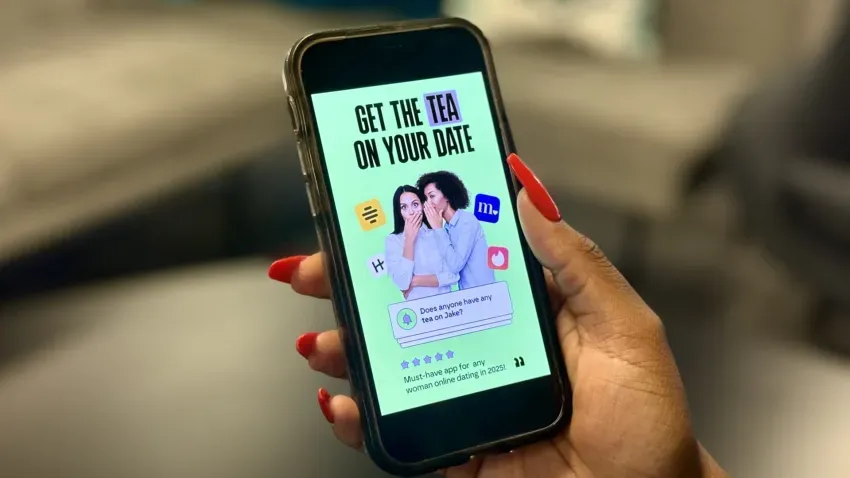When Private Goes Public: The Dark History of Infidelity Sites, Escort Platforms, and Celebrity Photo Hacks

The Digital Underworld Where Secrets Were Never Safe
In the murky corners of the internet, where desire meets discretion and privacy hangs by a digital thread, some of the most devastating data breaches in history have unfolded. From the infamous Ashley Madison hack that destroyed marriages worldwide to the celebrity photo leaks that violated Hollywood's most private moments, these incidents represent more than just cybersecurity failures—they're cautionary tales about the dangerous intersection of technology, sexuality, and human vulnerability.
This is the story of how the internet's most secretive platforms became hunting grounds for hackers, blackmailers, and digital vigilantes, leaving millions of users exposed, humiliated, and forever changed by their pursuit of privacy in an increasingly public world.

The Ashley Madison Apocalypse: When 32 Million Secrets Went Public
The Website That Promised Discretion but Delivered Disaster
Ashley Madison marketed itself as the ultimate playground for married people seeking extramarital affairs. With the tagline "Life is short. Have an affair," the Canadian website built a $115 million business on the promise of absolute discretion. Users paid premium fees for services that would allegedly keep their infidelities completely private, including a "full delete" service that claimed to permanently remove all traces of their activity for $19.
The reality, as the world would discover in devastating fashion, was far different.
The Impact Team Strikes
On July 19, 2015, a hacker group calling itself "The Impact Team" announced they had infiltrated Ashley Madison's systems and stolen the personal data of its entire user base. Their demands were simple: shut down Ashley Madison and its sister site Established Men, or face the public release of every user's most intimate secrets.
The hackers' motivation appeared to be moral outrage mixed with technical expertise. In their manifesto, they accused Ashley Madison's parent company, Avid Life Media, of fraud and deception:
"We have explained the fraud, deceit, and stupidity of ALM and their members. Now everyone gets to see their data... Too bad for ALM, you promised secrecy but didn't deliver."
The 30-Day Countdown to Catastrophe
Ashley Madison refused to comply with the hackers' demands, perhaps gambling that the threat was empty. It was a catastrophic miscalculation. Exactly 30 days after the initial warning, The Impact Team made good on their promise.
On August 18, 2015, the hackers released a devastating data dump containing:
- 9.7 gigabytes of user data from 32 million accounts
- Real names, email addresses, and home addresses
- Credit card transaction details spanning seven years
- Sexual preferences and fantasies from user profiles
- Internal company emails exposing Ashley Madison's deceptive practices
Two days later, they released another 12.7 gigabytes of corporate emails, including those of CEO Noel Biderman, further exposing the company's internal operations.
The Human Wreckage
The Ashley Madison breach wasn't just a cybersecurity incident—it was a human catastrophe on a global scale. The leaked data revealed:
The Fake Profile Scandal: Analysis of the data showed that 95% of the female profiles on Ashley Madison were fake. Of the site's supposed female user base, fewer than 1% had been used regularly, with most created once and never used again. The site was essentially a digital honeypot designed to extract money from predominantly male users seeking affairs that would never materialize.
The Failed Deletion Scam: Despite charging users $19 for "full delete" services, the company never actually removed user data from their servers. Internal documents revealed that Ashley Madison was making $1.7 million annually from users paying to delete profiles that were never actually deleted.
Global Consequences: The breach had international ramifications. In Saudi Arabia, where adultery is punishable by death, 1,200 email addresses with the .sa domain were identified. In conservative societies worldwide, users faced potential honor killings, imprisonment, or social ostracism.
The Death Toll
The most tragic consequence of the Ashley Madison breach was its human cost. Toronto police confirmed at least two suicides directly linked to the data exposure, with unconfirmed reports of additional deaths in the United States. One particularly heartbreaking case involved a pastor and professor at the New Orleans Baptist Theological Seminary who took his own life six days after the breach was announced.
The psychological trauma extended far beyond those who died by suicide. Marriages dissolved, careers ended, and families were torn apart as the private transgressions of millions became public knowledge.
Legal and Financial Aftermath
The legal consequences were swift and severe:
- $11.2 million class-action settlement for affected users in the United States and Canada
- $1.6 million fine from the Federal Trade Commission for deceptive practices
- Additional settlements with regulators in Canada and Australia
- Criminal charges against the hackers (though their identities remained largely unknown)
Ironically, the scandal didn't kill Ashley Madison. The site, now rebranded and owned by Ruby Corporation, continues to operate and claims to have more users than ever before. The company has implemented enhanced security measures, including two-factor authentication and improved encryption, but the damage to users caught in the original breach was irreversible.
The Fappening: When Hollywood's Most Private Moments Went Viral
The Genesis of Celebrity Vulnerability
On August 31, 2014, the internet exploded with one of the most shocking celebrity privacy violations in history. Nearly 500 private photos of various celebrities—mostly women, many containing nudity—were posted on the notorious imageboard 4chan and quickly spread across Reddit, Imgur, and countless other platforms.
The leak, dubbed "The Fappening" (a portmanteau of "fap," slang for masturbation, and "The Happening") and "Celebgate," represented a watershed moment in digital privacy violations. Unlike previous celebrity hacks that targeted individual accounts, this was a coordinated assault on the private lives of Hollywood's biggest stars.
The Victims: A Who's Who of Hollywood
The scale and prominence of the victims was unprecedented. Among those affected were:
A-List Actresses: Jennifer Lawrence (at the height of her Hunger Games fame), Kate Upton, Kirsten Dunst, Mary Elizabeth Winstead, and dozens of others found their most intimate photos splashed across the internet.
Rising Stars: Victoria Justice, Ariana Grande (who denied the photos' authenticity), and McKayla Maroney (who initially claimed the photos were fake but later confirmed their authenticity while revealing she was underage when they were taken).
The Breadth of Violation: The leaked photos ranged from selfies and casual shots to explicit nude images, many taken in the privacy of the victims' homes and intended for intimate partners.
The Technical Breakdown: How iCloud Became a Trap
The hackers exploited several vulnerabilities in Apple's iCloud system:
Phishing Attacks: The perpetrators created fake Apple security emails, tricking celebrities into providing their iCloud credentials. One hacker used the email address "appleprivacysecurity" to appear legitimate.
Brute Force Attacks: Taking advantage of a vulnerability in Apple's Find My iPhone service, attackers made unlimited password attempts without triggering security lockouts.
Social Engineering: Hackers researched celebrities' personal lives to guess security questions and bypass two-factor authentication.
The Collection Network: The stolen photos had been circulating privately among a network of collectors for weeks before their public release, with hackers trading images like digital baseball cards.
The Expanding Nightmare: Fappening 2.0 and Beyond
The initial August 2014 leak was just the beginning. Throughout the fall of 2014 and continuing into 2017, additional waves of celebrity photos were released:
September 2014: Second and third waves included photos of Kim Kardashian, Vanessa Hudgens, and Gabrielle Union.
2017 Revival: Three years later, new leaks targeted Anne Hathaway, Miley Cyrus, Kristen Stewart, Tiger Woods, and Lindsey Vonn, proving that the threat was ongoing.
The Industry Response: Too Little, Too Late
Apple's response was initially defensive, claiming that the breach wasn't due to a "widespread iCloud vulnerability" but rather targeted attacks on individual accounts. However, the company was forced to acknowledge the severity of the situation and implement new security measures:
- Enhanced two-factor authentication for iCloud accounts
- Improved phishing detection for Apple ID login attempts
- Better encryption for stored photos and messages
- User education campaigns about password security and phishing
The Legal Hunt: Bringing the Perpetrators to Justice
Unlike many cybercriminal operations, law enforcement was eventually successful in identifying and prosecuting several Fappening hackers:
Ryan Collins (36, Pennsylvania): Sentenced to 18 months in prison for illegally accessing Gmail and iCloud accounts through phishing schemes.
Edward Majerczyk (28, Illinois): Received nine months in prison for similar phishing attacks targeting celebrity accounts.
Emilio Herrera (32, Chicago): Accused of accessing 572 iCloud accounts and making 3,263 unauthorized logins.
George Garofano (26, Connecticut): The fourth hacker charged, admitted to phishing over 250 celebrity iCloud accounts.
The Cultural Impact: Victim-Blaming and Digital Misogyny
The Fappening sparked intense debate about victim-blaming, digital privacy, and online misogyny. While some celebrities like Jennifer Lawrence spoke out forcefully, calling the hack a "sex crime," others faced criticism for taking the photos in the first place.
Jennifer Lawrence's Response: "It is not a scandal. It is a sex crime. It is a sexual violation. It's disgusting. The law needs to be changed, and we need to change."
The Reddit Controversy: The social media platform initially allowed the photos to spread through dedicated subreddits before eventually banning them, highlighting the challenges platforms face in balancing free speech with privacy protection.
Media Complicity: Many news outlets published the photos or provided detailed descriptions, effectively participating in the violation while claiming to report on it.
The Underground Economy: Escort Sites and Adult Platform Breaches
EscortReviews.com: When Sex Work Goes Digital
The digital revolution hasn't just changed mainstream dating—it's also transformed the world's oldest profession. EscortReviews.com, a vBulletin forum community with over 470,000 members, served as a hub where sex workers could advertise their services and clients could share reviews of their experiences.
In February 2021, the site suffered a devastating breach when hackers downloaded its entire user database. The exposed data included:
- 472,695 user accounts with display names and email addresses
- MD5-hashed passwords (easily crackable by modern standards)
- Optional personal information including Skype accounts and birthdates
- IP addresses linking users to their geographic locations

The #EscortsOffline Campaign: Digital Vigilantism Meets Religious Extremism
In 2015, a Moroccan hacker identifying himself as "ElSurveillance" launched a systematic campaign against escort and adult websites, defacing 79 sites as part of his #EscortsOffline initiative. His motivations were explicitly religious:
"Allah gives us a body which we are to sanctify and nurture and not to use as a commodity and destroy... many escort websites on the internet are fake and fraudulent, which are a front for recording people's personal information as well as stealing their money."
ElSurveillance's campaign included:
- Website defacements with religious messages
- Data theft from user accounts, including 30,000+ records from drjizz.com
- Public shaming of users to discourage them from using such services
Fatal Model: Brazil's Biggest Escort Service Exposed
In 2023, Fatal Model, Brazil's largest escort service app with over 18 million records, suffered a massive data breach. The exposed database contained:
- Biometric verification data confirming the identities of both escorts and clients
- Over 69,000 escort accounts with photos, videos, and personal details
- Application source code and development files
- Admin access tokens and internal system information
The breach was particularly devastating because Fatal Model used advanced identity verification technology, meaning the exposed data belonged to real individuals rather than fake profiles.
The Massage Parliament Underground: RubMaps and Digital Surveillance
RubMaps, a website that bills itself as providing "erotic massage parlor reviews & happy endings," has become a crucial tool for both clients seeking services and law enforcement conducting investigations. The site allows users to review massage parlors, with many reviews detailing sexual services offered in violation of local laws.
Law Enforcement Usage: Police departments across the United States now monitor RubMaps as an investigative tool. As noted in a 2016 article in Prosecutor's Brief magazine, a positive RubMaps review "indicates that the location is a brothel."
The Congressional Connection: The site entered the Congressional Record in 2015 when Senator Dianne Feinstein referenced it during discussions of the Justice for Victims of Trafficking Act.
The Robert Kraft Connection: The site gained national attention during the investigation that ensnared New England Patriots owner Robert Kraft, with law enforcement using RubMaps reviews as evidence in their case.
The Hookup Site Breaches: CityJerks and TruckerSucker
In 2023, two niche hookup websites—CityJerks and TruckerSucker—were breached, exposing intimate details about their users' sexual preferences and activities. The stolen data included:
- 85,000 combined user accounts with personal information
- Private messages containing explicit hookup arrangements
- Sexual orientation data and specific fetish preferences
- Location information linking users to their communities
The Anatomy of Digital Destruction: Why These Breaches Were So Devastating
The Perfect Storm of Vulnerability
Several factors made these breaches particularly catastrophic:
1. The Stigma Factor: Unlike breaches of mainstream sites, users of infidelity platforms, escort services, and those storing intimate photos faced potential social ostracism, legal consequences, or physical danger if exposed.
2. The Blackmail Goldmine: The sensitive nature of the data made it perfect for extortion schemes. Years after the Ashley Madison breach, scammers continue to target victims with personalized blackmail attempts.
3. The Permanence Problem: Once intimate data is released online, it becomes virtually impossible to contain. Search engines, archive sites, and countless downloads ensure the information remains accessible indefinitely.
4. The Verification Trap: Many sites required real identification to prevent fake accounts, creating databases of verified sensitive information that became targets for criminals.
The Technical Failures: A Litany of Security Sins
These breaches shared common security failures:
Weak Password Hashing: Many sites used outdated MD5 encryption, making password cracking trivial for attackers.
Insufficient Access Controls: Databases were often stored without proper authentication or were accessible from the public internet.
Poor Employee Training: Social engineering attacks succeeded because staff weren't trained to recognize sophisticated phishing attempts.
Lack of Encryption: Sensitive data was stored in plain text, making it immediately useful to attackers upon breach.
No Monitoring: Many breaches went undetected for months or years, allowing attackers to extract massive amounts of data.
The Ongoing Threat: Why These Attacks Continue
The Economics of Exploitation
The underground market for stolen intimate data continues to thrive because:
High-Value Targets: Celebrities, politicians, and wealthy individuals represent lucrative blackmail opportunities.
Low-Risk, High-Reward: Many jurisdictions lack adequate cybercrime enforcement, while the profits from blackmail and extortion can be substantial.
Anonymity Advantages: Cryptocurrency payments and dark web marketplaces make it difficult to trace criminal proceeds.
Victim Silence: Many victims prefer to pay quietly rather than risk further exposure through legal proceedings.
The Evolution of Attack Methods
Modern attackers have refined their techniques:
Advanced Phishing: More sophisticated social engineering attacks that are harder to detect.
Supply Chain Attacks: Targeting third-party services that process data for multiple platforms.
Insider Threats: Recruiting employees or contractors with access to sensitive systems.
AI-Enhanced Attacks: Using artificial intelligence to create convincing fake communications and bypass security measures.
The Psychological Aftermath: Living with Digital Violation
The Trauma of Exposure
Victims of these breaches often suffer long-lasting psychological effects:
Post-Traumatic Stress: Many report symptoms similar to those experienced by victims of physical assault, including nightmares, anxiety, and depression.
Social Isolation: Fear of judgment leads many victims to withdraw from social connections and professional relationships.
Trust Issues: Difficulty forming intimate relationships due to fear of further exposure or betrayal.
Career Impact: Professional consequences ranging from job loss to permanent career damage.
The Ripple Effect
The impact extends beyond direct victims:
Family Destruction: Spouses and children of Ashley Madison users faced secondary trauma and social stigma.
Community Impact: Entire communities were affected when local religious leaders, politicians, or business figures were exposed.
Industry Changes: The entertainment industry implemented new security protocols for celebrity clients following The Fappening.
The Legal Landscape: Justice in the Digital Age
The Challenge of Prosecution
Prosecuting these crimes presents unique challenges:
Jurisdictional Issues: Hackers often operate across international borders, complicating law enforcement efforts.
Evidence Preservation: Digital evidence can be easily destroyed or modified, making prosecution difficult.
Victim Cooperation: Many victims are reluctant to testify due to the sensitive nature of the crimes.
Resource Constraints: Law enforcement agencies often lack the technical expertise and resources needed for complex cybercrime investigations.
Regulatory Responses
Governments worldwide have begun implementing stronger data protection laws:
GDPR in Europe: Massive fines for companies that fail to protect personal data adequately.
State Laws in the US: Individual states have implemented their own data breach notification requirements and privacy protections.
Criminalization of Non-Consensual Sharing: Many jurisdictions now specifically criminalize the sharing of intimate images without consent.
The Technology Response: Building Better Defenses
Platform Improvements
Companies have implemented various security enhancements:
End-to-End Encryption: Ensuring that even platform operators cannot access user communications or files.
Zero-Knowledge Architecture: Designing systems so that service providers never have access to unencrypted user data.
Advanced Authentication: Multi-factor authentication systems that are harder to bypass.
Behavioral Monitoring: AI systems that can detect unusual access patterns or potential breaches.
User Education
Efforts to educate users about digital safety have expanded:
Security Awareness Training: Programs teaching users to recognize phishing attempts and use strong passwords.
Privacy Settings Education: Helping users understand and configure privacy controls on their devices and accounts.
Digital Hygiene: Promoting best practices for online behavior and data sharing.
The Philosophical Questions: Privacy in the Digital Age
The Expectation of Privacy
These breaches raise fundamental questions about privacy expectations:
Digital vs. Physical Privacy: Should digital communications and files receive the same privacy protections as physical possessions?
Consent and Context: When users share intimate content with trusted partners, do they consent to potential wider distribution?
The Right to be Forgotten: Should individuals have the right to have intimate content permanently removed from the internet?

The Victim-Blaming Problem
Society's response to these breaches often includes troubling elements of victim-blaming:
Technology Shaming: Suggesting that victims "should have known better" than to use digital technology for intimate purposes.
Moral Judgment: Particularly evident in responses to infidelity site breaches, where some argued victims "deserved" exposure.
Gender Disparities: Female victims of image-based abuse face different social consequences than male victims.
Lessons Learned: What These Breaches Teach Us
For Individuals
Digital Permanence: Anything stored or transmitted digitally should be considered potentially public.
Security Hygiene: Using strong, unique passwords and enabling two-factor authentication is essential.
Platform Selection: Choosing services with strong security reputations and transparent privacy policies.
Legal Awareness: Understanding the legal implications of both using certain services and having private content exposed.
For Companies
Security by Design: Building privacy and security protections into systems from the ground up rather than adding them later.
Transparency: Being honest with users about data collection, storage, and security practices.
Incident Response: Having clear procedures for responding to breaches and communicating with affected users.
Regulatory Compliance: Ensuring adherence to applicable privacy laws and industry standards.
For Society
Legal Frameworks: Developing comprehensive laws that address the unique challenges of digital privacy violations.
Social Norms: Evolving cultural attitudes to reduce stigma for victims while maintaining accountability for perpetrators.
Technical Standards: Establishing industry-wide security standards for platforms handling sensitive data.
The Future Landscape: What Comes Next
Emerging Threats
Deepfakes and AI Manipulation: The ability to create convincing fake intimate content presents new privacy threats.
IoT Vulnerabilities: Internet-connected devices in private spaces create new surveillance opportunities.
Quantum Computing: Future advances in computing power could render current encryption methods obsolete.
Biometric Data: The increasing use of biometric authentication creates new categories of sensitive data that could be compromised.
Technological Solutions
Homomorphic Encryption: Technologies that allow computation on encrypted data without decrypting it.
Blockchain Privacy: Distributed systems that could provide privacy protection without central points of failure.
AI-Powered Defense: Machine learning systems that can detect and prevent breaches in real-time.
Hardware Security: Physical security modules that protect sensitive data even if software is compromised.
Conclusion: The Price of Privacy in the Digital Age
The breaches of Ashley Madison, The Fappening, and countless escort and adult platforms represent more than just cybersecurity failures—they're symptoms of a digital ecosystem that has prioritized convenience and profit over privacy and security. These incidents have exposed not just personal data, but the fundamental vulnerabilities in how we approach intimacy, relationships, and personal expression in the digital age.
The human cost has been immense: suicides, destroyed marriages, ruined careers, and permanent psychological trauma for millions of victims. Yet these tragedies have also sparked important conversations about digital rights, corporate responsibility, and the need for stronger privacy protections.
As we move forward, several key principles must guide our approach to digital privacy:
Consent is Paramount: Individuals must have meaningful control over their personal data and how it's used.
Security is a Human Right: Access to secure communication and storage shouldn't be a luxury available only to the technologically sophisticated.
Victim Support is Essential: Society must develop better support systems for those whose privacy has been violated.
Corporate Accountability: Companies handling sensitive data must be held to the highest security standards, with meaningful consequences for failures.
The internet has fundamentally changed how we experience intimacy, relationships, and sexuality. While these changes have brought new opportunities for connection and self-expression, they've also created new vulnerabilities and risks. The breaches examined in this investigation serve as stark reminders that in the digital age, privacy is not guaranteed—it must be actively protected through technological safeguards, legal frameworks, and social norms that prioritize human dignity over digital convenience.
The victims of these breaches paid a terrible price for society's collective failure to adequately protect digital privacy. Their suffering should not be in vain. We owe it to them—and to ourselves—to build a digital future where intimacy and privacy can coexist with technological innovation, where the promise of discretion is backed by unbreakable security, and where the cost of human connection doesn't include the risk of total exposure.
The question is not whether there will be future breaches of sensitive platforms—there almost certainly will be. The question is whether we will learn from these past failures and build systems robust enough to protect the most vulnerable aspects of human experience in an increasingly connected world.
In the end, these breaches teach us that privacy is not just a technical problem to be solved, but a fundamental human need that must be protected, respected, and preserved in whatever digital future we choose to build.
This investigation is based on publicly available court documents, security research, news reports, and official statements compiled through July 2025. The names and details of non-public figures have been omitted to protect privacy, while focusing on the systemic issues these breaches revealed.








